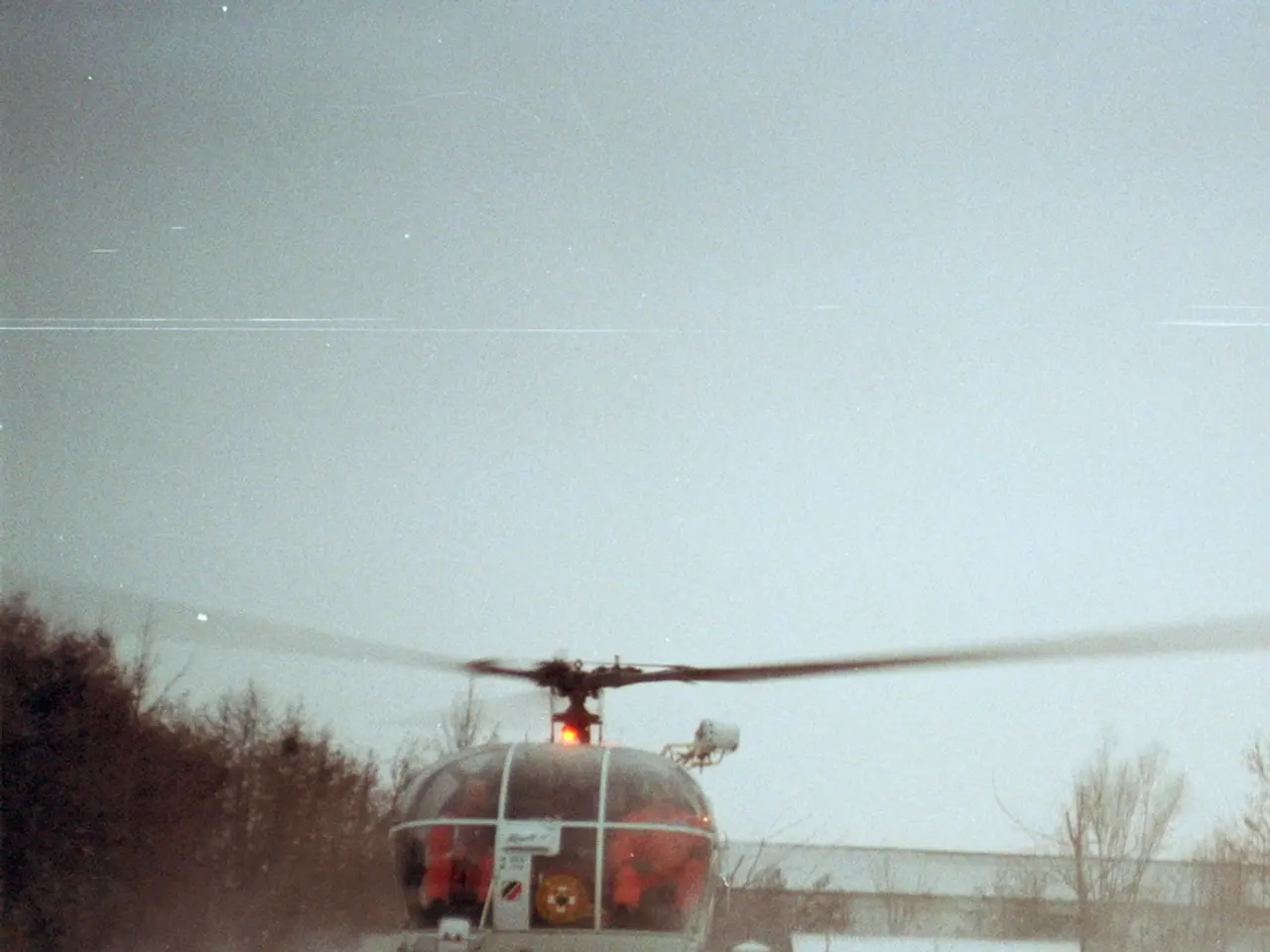Rescue team and airmen in Magadan undergo training for landing without parachutes
Helicopter Rappelling Training Enhances Rescue Capabilities in Russia
In the Magadan region of Russia, rescue teams from the Main Directorate of the Russian Emergencies Ministry have been honing their skills in helicopter rappelling. The training, conducted using a Mi-8 helicopter from the Khabarovsk Aviation and Rescue Center, was essential for preparing rescuers for search and rescue operations in remote areas with challenging terrain.
The training sessions involved helicopter rappelling in "hover" mode, using roller descent devices and SUR (Self-Rescue Unit) equipment. Rescuers refined their entire descent procedure, including approaching the release point, exiting the helicopter, controlling descent speed, landing, unhooking from the rope, securing the next descending rescuer, and packing the rope into a transport bag for further use.
The purpose and significance of this training are to enable rescuers to quickly and safely deploy from a hovering helicopter to inaccessible or hazardous locations during rescue operations. This technique allows emergency personnel to access victims in terrains where landing is impossible or unsafe, such as cliffs, forests, flooded areas, or mountainous regions, ensuring timely evacuation and medical aid.
Helicopter rappelling is a critical skill because it enhances the responsiveness and versatility of rescue teams. It significantly expands operational capabilities by enabling the delivery of rescuers and equipment directly to the site of an emergency without the constraints of landing zones. This training also emphasizes the safe use of ropes, harnesses, and helicopter maneuvering, reducing the risk to rescuers and victims during aerial extractions.
For the Russian Emergencies Ministry, mastering helicopter rappelling is especially important due to the country's diverse and often challenging geography, including remote wilderness, rugged mountains, and vast forested areas. The ability to conduct aerial rescues quickly and safely supports their mandate to protect lives and respond effectively to emergencies, disasters, and accidents in all environments.
The Magadan Life & Magadan Region Group published a news article on Telegram, discussing the rescue training in the Magadan region. During the training, release personnel also practiced their actions, honing their skills and gaining experience. Over the course of the training, rescue teams from the Main Directorate of the Russian Emergencies Ministry in the Magadan region conducted 61 training descents from a helicopter.
In summary, helicopter rappelling training ensures that rescue teams can perform efficient, safe, and rapid access and evacuation in situations where traditional ground or landing-based rescue operations are not feasible, thereby increasing the chances of successful outcomes in emergency operations.
- Incorporating sports-like techniques such as helicopter rappelling offers a strategic advantage to rescue teams, as it allows for swift and safe access to remote or hazardous locations.
- Mastering helicopter rappelling techniques, akin to participating in sporting activities, enhances the versatility and response capabilities of rescue teams in various challenging terrains, aiding in timely evacuation and medical aid.







